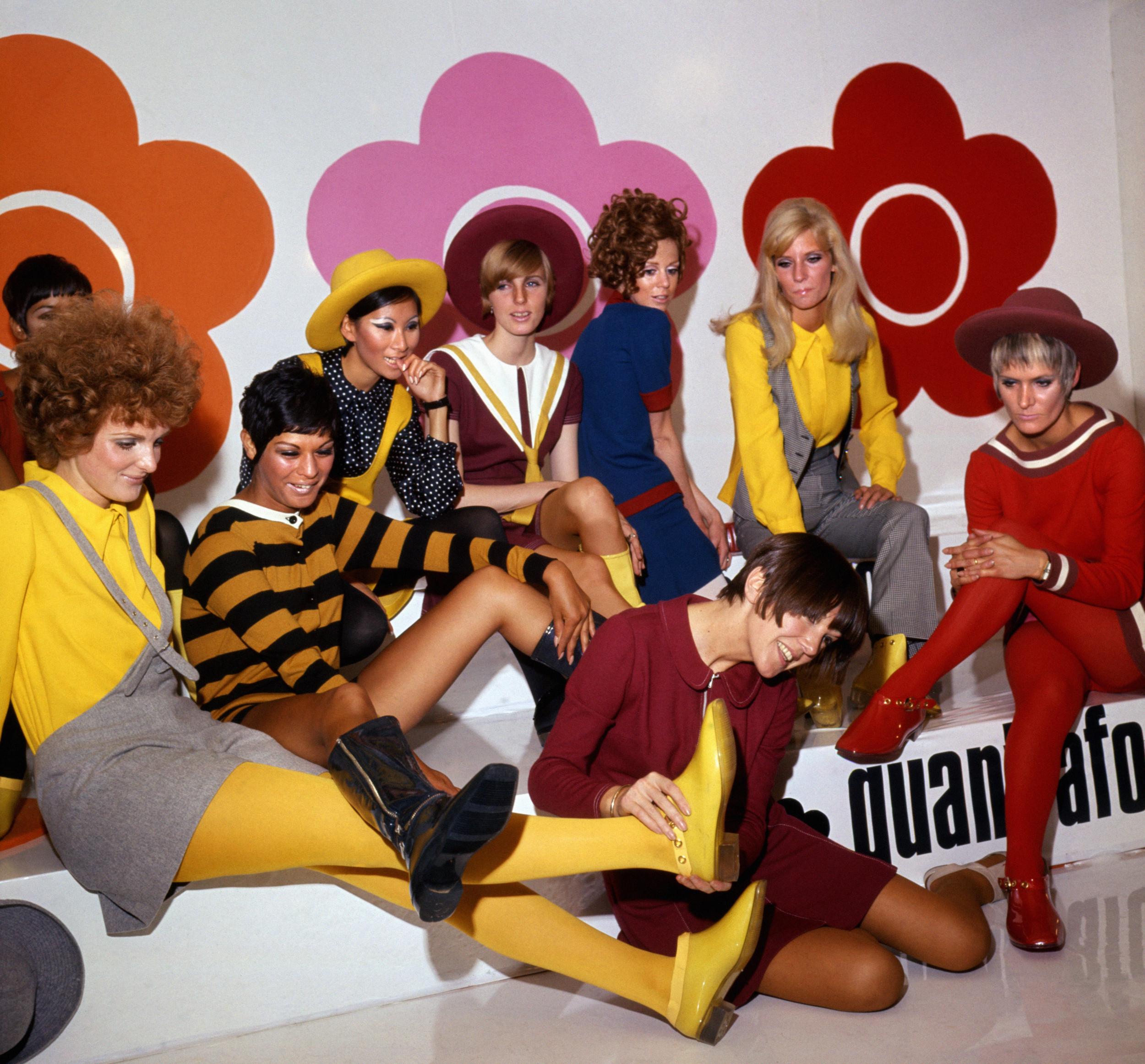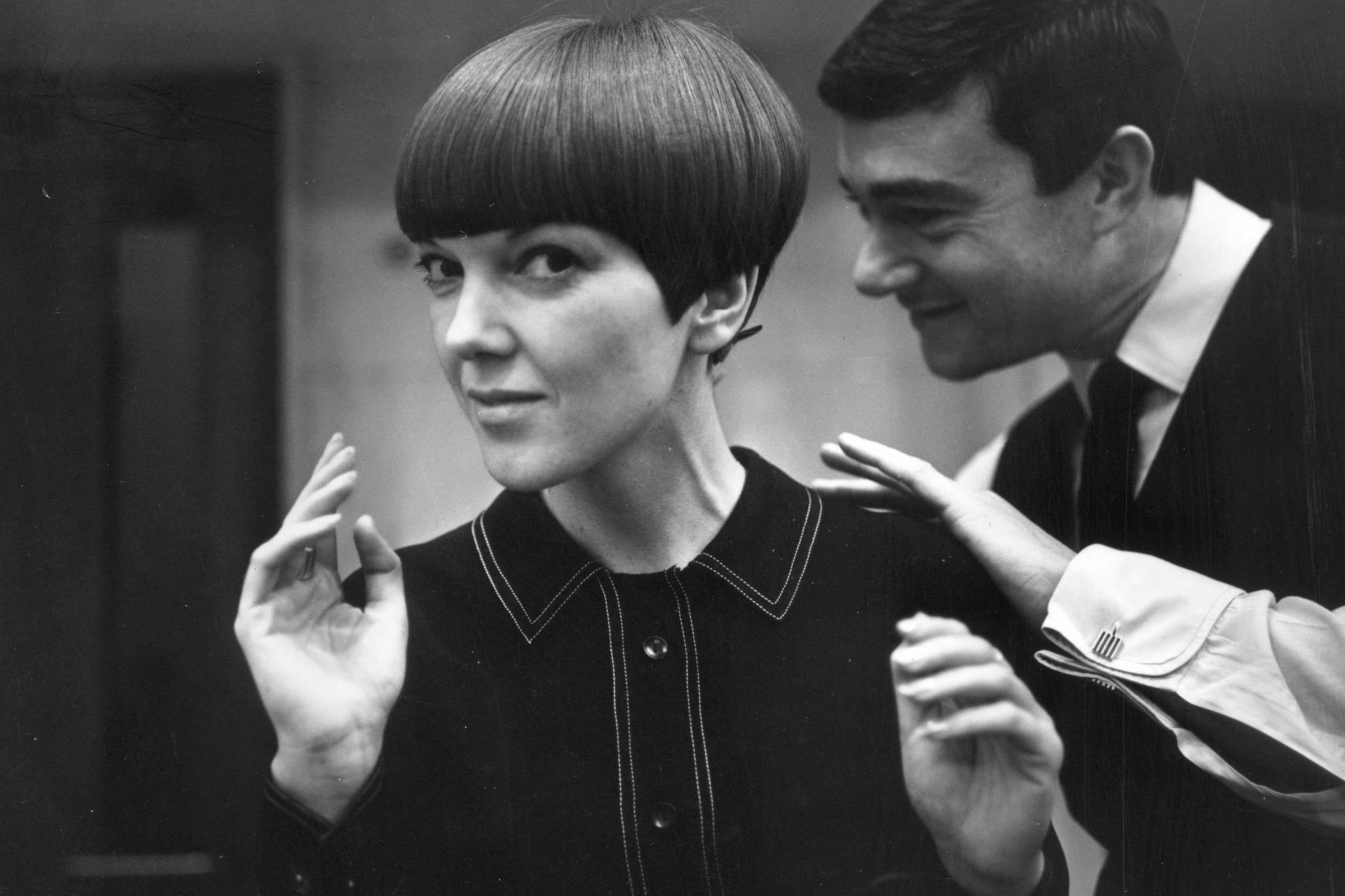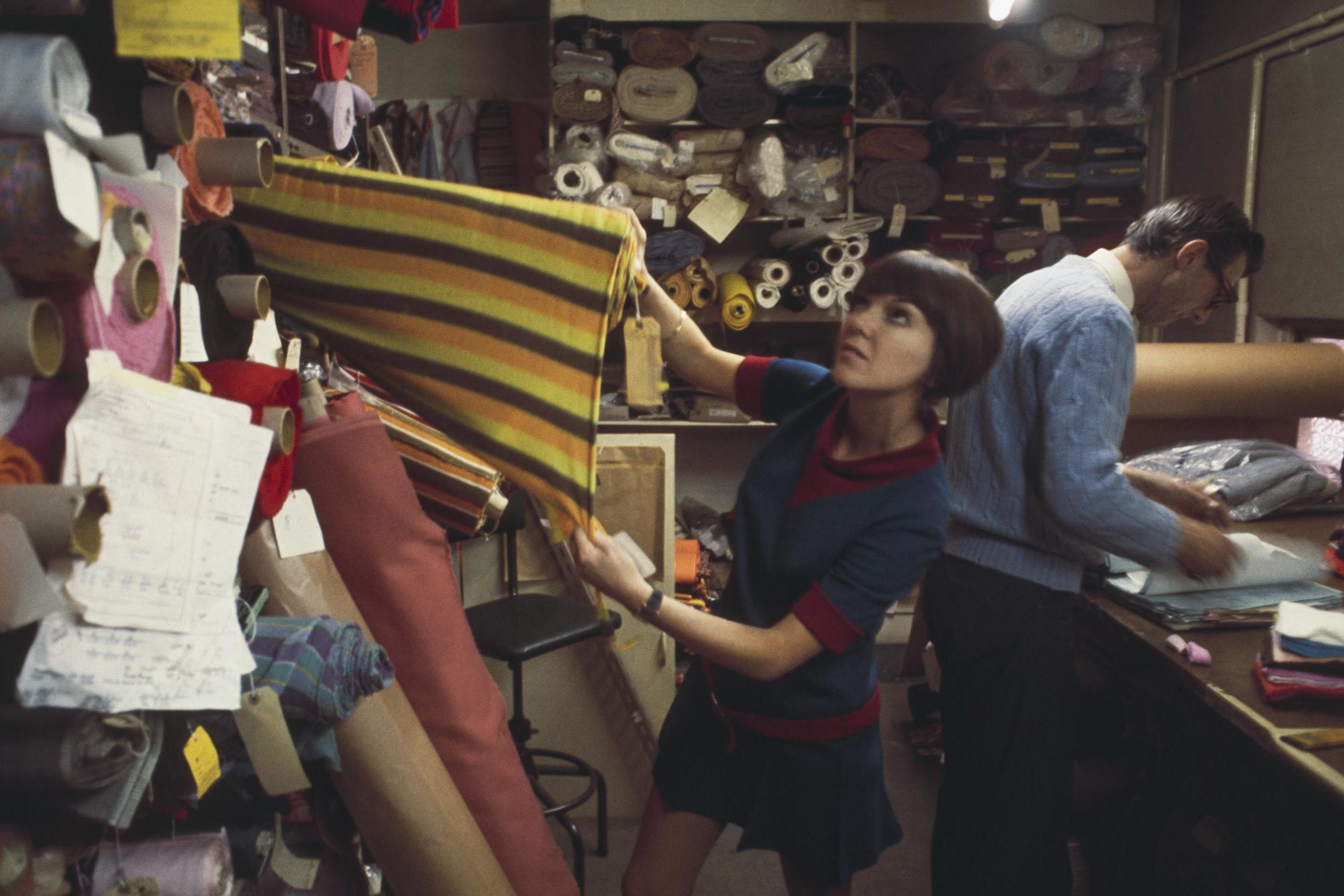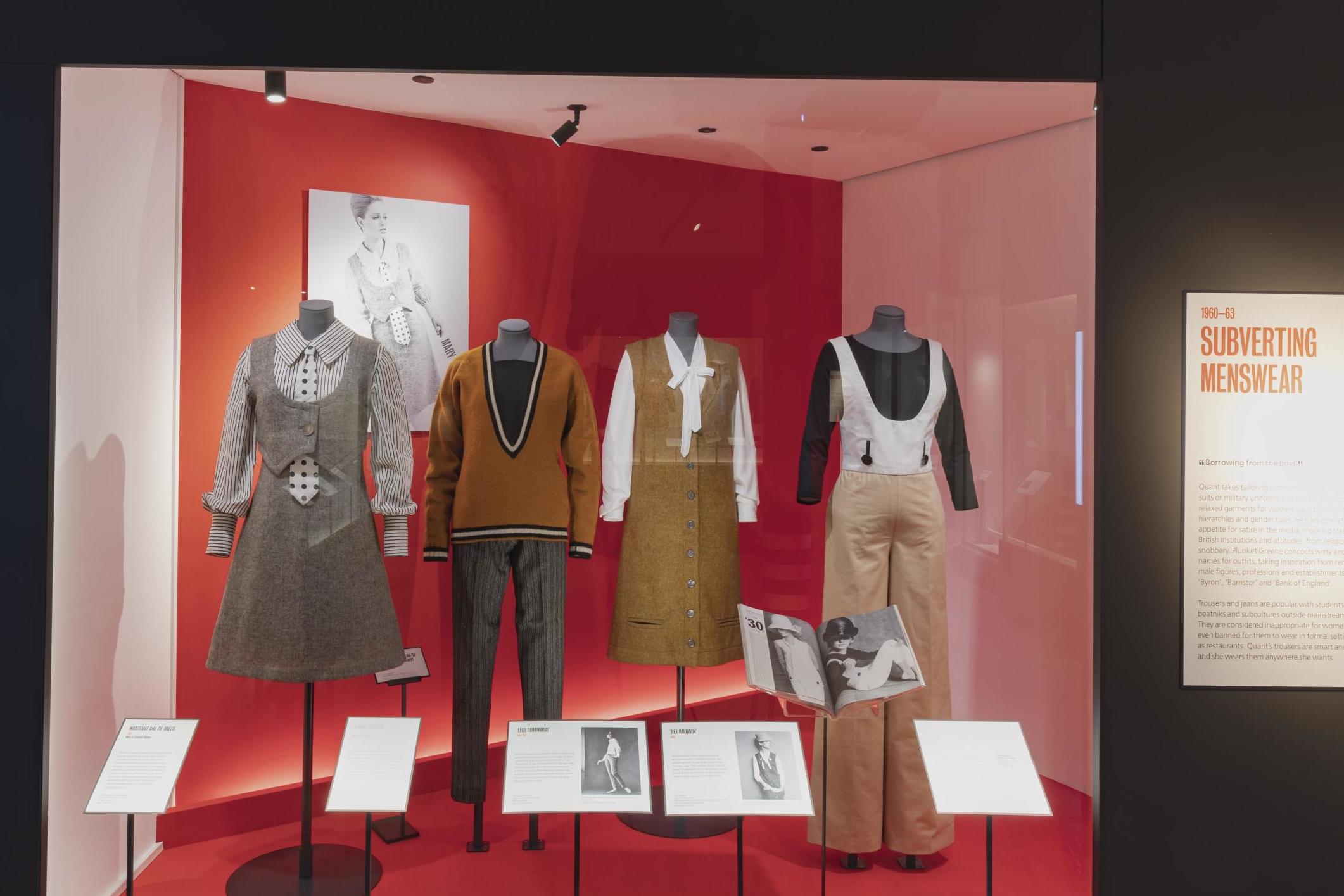Mary Quant at the V&A, review: Exhibition explores revolutionary designer through intimate lens
Harriet Hall gets a first look at the first international retrospective of the designer for 50 years


It’s difficult to imagine that before Mary Quant (b.1934), girls dressed like children and women dressed like their mothers: there was no in between; no “teenage” fashion that signalled youthful expression.
Through brightly-coloured shift dresses and pinafores with Peter Pan collars made from stretchy jersey, Quant’s designs represented a new sartorial freedom. She broke away from the constrictive corsetry and domesticated waspish waists of 1950s fashion, led by Christian Dior’s New Look of 1947, instead, rebelling against elitist Parisian couture - and defining the youth-led spirit of the 1960s.
This week, the Victoria and Albert Museum opens the doors of the first international retrospective of Quant’s work in almost half a century (the last one, astonishingly, was in 1973, at Kensington Palace). Exploring the designer’s twenty-year heyday between 1955 and 1975 the exhibition brings together over 120 garments as well as accessories, cosmetics, sketches and photographs from the designer’s own archive – many on display for the first time.
Its perfect timing for today’s politicised age: from the moment she opened Bazaar - her boutique on London’s fashionable King’s Road - in 1955, Quant designed clothes for real women. Cutting fabrics that she bought nightly in Harrods (before catching onto the necessity of wholesale purchasing), she made clothes with herself in mind that she felt would appeal to all women, ones that she couldn’t find on the market: hers were the clothes of the mod, of the sexual revolution and the liberated: all gamine and coquettish with Pop Art influence and schoolgirl playfulness. They symbolised the beginning of London as a locus of street style.
Entering the exhibition, visitors walk right into the bustling hubbub of post-war 1950s epicentre-of-cool, the King’s Road. Ensembles are laid out like Bazaar window displays and Quant’s spirited vision begins to emerge through Chanel-style menswear-inspired trousers (a bold move for the 1960s when women in trousers were barely permitted outside the home), waistcoats and ties.
The V&A has the largest collection of Quant in the world, yet what makes this exhibition special is not the chronological charting of a designer’s career, but the real-life stories of the women who actually lived in her clothes.
In June of last year, curators Jenny Lister and Stephanie Wood launched a national call-out using the hashtag #WeWantQuant, appealing to members of the British public to lend or donate any Quant items they may have lurking in their wardrobes. Wood described a deluge of responses: “We had thousands of women get in touch with us and it absolutely transformed the exhibition. We’ve included 35 objects from them.” It is these items – displayed alongside photographs and personal testimonies of the women who wore them - that form the backbone of the first part of the exhibition downstairs in the museum’s dual-levelled fashion gallery. And it is they that enable visitors to truly understand the power of what this revolutionary designer achieved.
During an age in which Paris still dominated fashion and dictated often unaffordable trends, Quant sought to make her clothes available to women from all social milieu, helping to pioneer mass-market clothes and leading a democratic approach to trends that enabled all women to buy into the mood of the moment. "I wanted to provide fashion for everyone," she says in her autobiography. In 1963 she launched the Ginger Group, an accessible diffusion line that was soon stocked by US department store JC Penney. Taking things a step further the following year, she began to sell paper patterns for her designs, enabling women to sew their own Quants at home.

A central pavilion upstairs in the exhibition features just some of the thousands of products that Quant licenced to manufacturers, giving visitors a taste of just how global her brand became. We see Quant develop from her early at-home designs to becoming an international brand, lending her name and daisy logo to a range of makeup, homewares and underwear. “She was very clever,” says Wood. “In the late 1960s a lot of designers went bust and she was already looking forward towards expanding her reach.”
For most people, Quant’s name is synonymous with the miniskirt – of course, this gets its proper recognition in the retrospective. The curators, though, aren’t interested in whether or not Quant invented the truncated garment (the French credit André Courrèges for first daring to raise hemlines thigh high): after all, women on the streets had probably started to roll their hemlines before Quant ever marketed her ready-to-wear version. The shock factor of the mini made it ripe for the nascent women’s liberation movement and, combined with the birth of the contraceptive pill in 1961, it became a symbol of emancipation, embraced by feminist activists Germaine Greer and Gloria Steinem. Quant’s version came in in bright colours and was worn with even brighter tights. Standing proudly at the top of a staircase, five mannequins present various iterations of this groundbreaking garment.

In a case nearby, Quant’s natty PVC rainwear is shown in all its glory. Her “Wet collection” was launched in 1963 and the pink and yellow capes, green trenches and shiny blue PVC wouldn’t look out of place in the likes of Topshop today.
Seeing such a vast array of Quant’s clothes in one space really highlights the impact of her zeitgeist-defining clothes. Beyond the miniskirt, she was a designer breaking boundaries for the everyday woman; allowing them to be young and liberated. It’s difficult to imagine the British high street as it is today, for all its trouble, without Quant’s influence.

If anything is missing from this comprehensive exhibition, it is the faces of Twiggy and Jean Shrimpton, the leggy doe-eyed girls who brought Quant’s clothes to life during the so-called youthquake of the era. But this is a user-generated exhibition; one led by the women who wore Quant themselves – and that feels far more relevant in an Instagram era. It’s an enormous display that demonstrates Quant’s influence beyond the usual limitation of the mini, revealing how Quant broke boundaries early in her career and experimented with unusual fabrics just as Coco Chanel before her did in the 1920s as well as her enduring influence on the British high street and the women who shop there.
The wonderful thing about this show is how contemporary Quant’s designs still feel some 60 years after she opened her first store. Perhaps that’s because Quant gave women exactly what they wanted.
Join our commenting forum
Join thought-provoking conversations, follow other Independent readers and see their replies
Comments
Bookmark popover
Removed from bookmarks